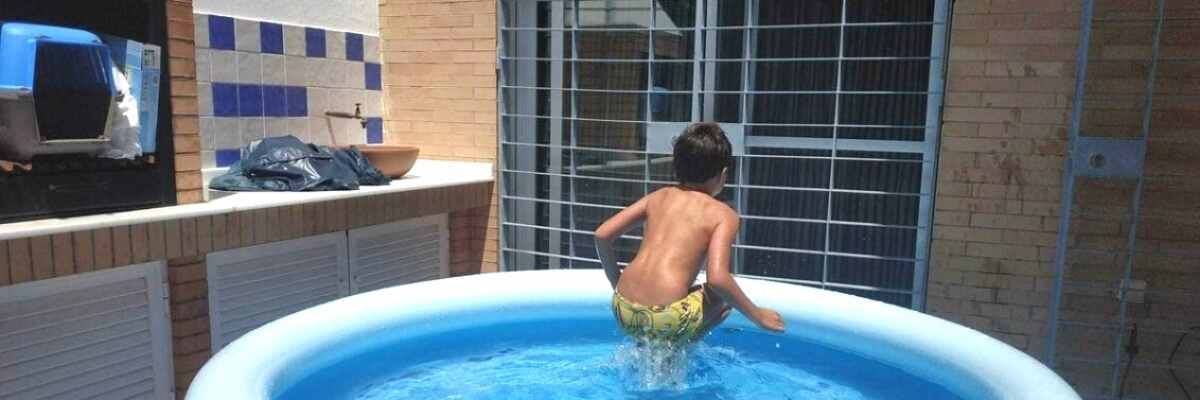
With the arrival of summer and the good weather we always feel like a nice dip to cool off. Quick and easy to set up, inflatable pools on a terrace at home are one of the most viable options for many people, either because they don’t have a beach nearby or because they don’t have a communal pool. If this applies to you, you should be aware of the risks involved in setting up an inflatable pool and whether there are any specific restrictions in this regard. We tell you all about it in this article.
Índice de contenidos
Can the Community restrict me from putting an inflatable pool on my terrace?
No. There’s no specific law dealing with the use of inflatable pools. The only way would be for any prohibition on use to be included in the Community Statutes, which are modified unanimously.
That said, there are some very good reasons why the Community may ask you to remove it.
Risks of setting up an inflatable pool
Each situation is different but you should always be aware that the weight of the water can cause serious problems. The most serious is a collapse, but before it comes to that you may find cracks, fissures and damp. Damp is the most minor damage, especially if the water drains onto the terrace itself or if there’s some kind of leak or accident.
We recommend: Water damage and leaks from a neighbour’s flat
What you should know before setting up an inflatable pool
First of all, it’s important to know the place where the inflatable pool is going to be set up and to know the weight of the area where it’s going to be placed can bear:
Location
In order to avoid serious accidents, it’s very important to place them in the right location and to check beforehand the load they can bear.
- A patio or garden without any underground structure wouldn’t be a problem, as there’s no one underneath and no damage of any kind can be caused.
- Terraces and balconies. May cause structural problems
- On top of garages. As in the previous case, the structure could be affected.
- Terraced houses. It’s also not recommended to place it next to a load-bearing wall as it may cause the wall to shift and eventually collapse.
Supported load
With the current Technical Code (DB SE-AE) in force since 2006 being applicable, all structures calculations are carried out based on permanent loads over time and variable loads.
For peace of mind and to know exactly how much weight structures are designed to bear, you should refer to the building’s specifications, taking into account the year of construction. Generally speaking, the average load that a terrace or slab can bear is 300 kg/m².
Architect or surveyor
Inflatable pools don’t come with a warning about the resistance of the floor structure and the labels only mention the capacity. Therefore, the most sensible thing to do is to contact an architect or surveyor to study the exact location where you want to place it and find out whether it’s possible or not through a certificate that guarantees that this particular structure supports the extra weight you want to place on it.
Responsibility for setting up a pool on a terrace
The fall of a swimming pool involves at least material damage, but if there are people around and a balcony collapses, it can be more serious. The owner is responsible for the damages, so they would face serious problems.
Mediterráneo recommends taking out civil liability insurance so that the community is covered in the event of an accident.